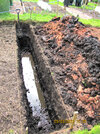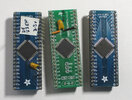Musicmanager
Well-Known Member
C ..
Your distain of Arduino is plain for all to see, but as I said, my disagreement is of no matter.
As I also said, I can't help with this because I don't understand the code and the parameters for your PIC will be quite different to my LEGO !
MM
Please explain your disagreements, so we can all understand where I may be going wrong.
Your distain of Arduino is plain for all to see, but as I said, my disagreement is of no matter.
Can you explain what may be wrong with my 'set sampling', so I can discover it earlier please.
I suggested all working together, on the setups, which of course will be different, but we will better understand what's going on.
As I also said, I can't help with this because I don't understand the code and the parameters for your PIC will be quite different to my LEGO !
MM

 .. Shovels i'm quite at home with..
.. Shovels i'm quite at home with..

